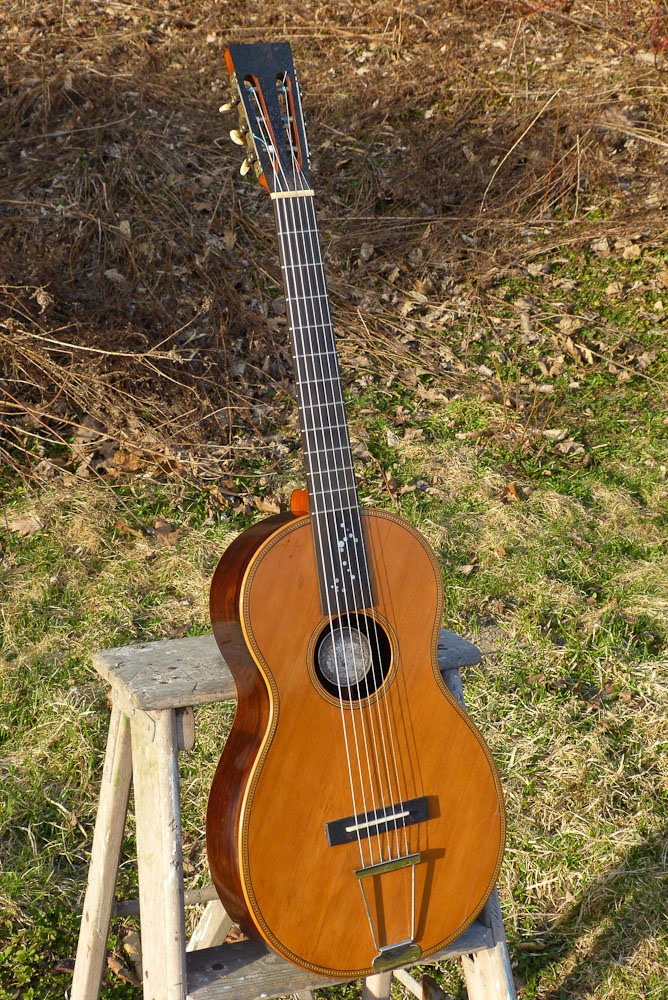
Starting in 1827 German clockmakers Messner and Weiss began moonlighting making mouth organs and turned it into a profitable business. Mass production of what we would call the ‘mouth organ’ or ‘harmonica’ began decades earlier in Vienna in 1829 and soon spread to neighboring countries. The expression MOUTH ORGAN first appeared in print as referring to a harmonica in 1866 and this expression is still popular today, although it is considered colloquial. The use of the words ‘mouth organ’ for panpipes continued into the 19th century, so it is sometimes difficult in deciphering quotes to tell which instrument is meant, but the OED did a good job of separating out the two This name, however, dates back to 1670 when it referred to a small wind instrument consisting of a row of small, short pipes of graduated lengths (also known as a ‘panpipe’ from Greek and Roman depictions of Pan playing one), which many of us owned as children. One of the most popular early English names of the harmonica was the MOUTH ORGAN. single octave aeolian, the trumpet aeolian, the two-octave chromatic aeolian, the Pandean aeolian, the chromatic Pandean aeolian. The booklet goes on to say that the instrument was first brought to England in 1827 and lists the 32 different models offered (e.g. An 1830 ‘harmonica’ instruction booklet entitled “German Aeolian Tutor” published in England by a company which imported and manufactured the instruments refers to them as AEOLIANS (also known as ‘aeolinas’) and I would hazard to guess that this is the earliest English language name of what we now refer to as the harmonica.


In 1821 a German clockmaker, Christian Buschmann, patented a primitive version of the first modern harmonica and called it an AURA, later changing its name to MUNDAEOLINE, which might be translated as ‘mouth organ.’ In 1826 a Bohemian instrument maker named Richter made advancements in allowing for both blow (for exhaling) and draw (for inhaling) reed plates and this instrument was also referred to as the MUNDHARMONIKA. Some other instruments that used the name but which would not normally be associated with the harmonica that we know and love include the glockenspiel (1825), which was originally called the ‘metal harmonica,’ and the ‘harmonica de bois,’ which was the original French name for the xylophone, and other instrument similar to a xylophone known only as the ‘harmonica,’ consisting of tuned strips of metal or glass fixed to a frame and struck with a hammer.

Others decided to call his invention a HARMONICA and that name describing Franklin’s brainchild appeared in print in 1778 (see quote). This was an improvement on the earlier and less high-tech ‘musical glasses.’ It was also referred to as the ‘glass harmonica,’ which bears no resemblance whatsoever to what we call a ‘harmonica’ today, and which Franklin dubbed the ARMONICA (1762, from Italian, feminine of ‘armonico,’ harmonious, from Latin ‘harmonicus,’ harmonic). In 1762 Ben Franklin made and patented a Rube-Goldberg-like instrument consisting of a row of rotating hemispheric glass bowls which were dipped into a trough of water and played by the application of one’s finger to the rims (see quotes below). HARMONICA was originally an all-purpose term, which referred to several different instruments.

Bobs, Ah “Freedom's just another word for nothing left to lose.” As the goose bumps settle down after listening to my copy of Janis Joplin’s 1971 posthumous hit ‘Me and Bobby McGee’ – what a flood of memories – I thought that it might be of interest to look at the history of the harmonica and and at the same time place the appearance of its various monikers (or is it monicas? or is it Lewinskys?) (>:)


 0 kommentar(er)
0 kommentar(er)
